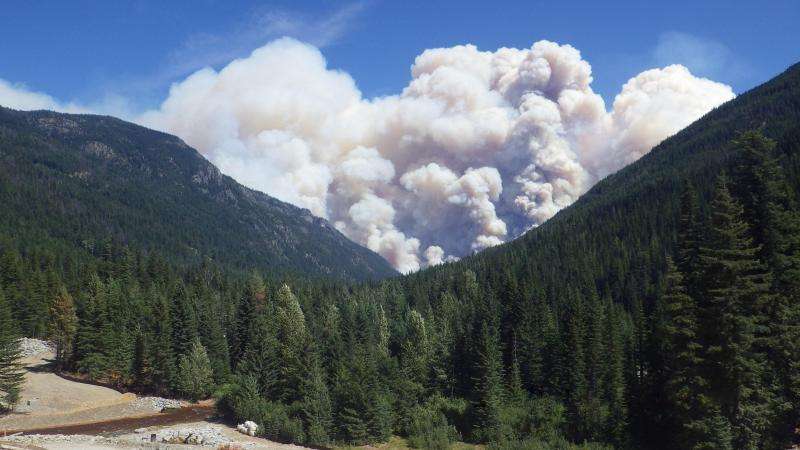Scientists advise letting wildfires burn when prudent

With nearly 9 million acres burned this year across the nation, 2015 is shaping up to be one of the most destructive wildfire seasons yet. And with drought and climate change, wildfires are only predicted to get worse.
In a commentary published Sept. 17 in Science, a team of scientists, including University of Washington researchers Jerry Franklin and James Agee, describe unique opportunities and provide suggestions to reform forest fire management to reduce the impacts of inevitable wildfires in future years.
"It's very clear that our current policies aren't working," said Franklin, a professor of environmental and forest sciences. "We need to change our policies to recognize the use of more prescribed and natural fire to deal with the conditions we're seeing in our forests today as well as to greatly accelerate restoration of more resilient conditions in accessible forests that have been dramatically altered over the past century."
The authors suggest that change come in the form of more prescribed and managed burns, increased tree thinning and less suppression of wildfires in specific conditions. The authors point to Parks Canada, which divides the landscape into different zones for fire management.
For example, U.S. forest plans could:
- Use mechanical thinning and wildfire suppression near homes
- Use prescribed fire and mechanical treatments just outside of the wildland-urban interface
- Allow more remote lands to burn as managed wildfires when naturally ignited and use prescribed fires to clear out thick, dry brush and other wildfire fuel
Through these zones, the U.S. could restore large swaths of forests—such as the eastern slope of the Cascades in Washington and Oregon and much of California's Sierra Nevada—to a more natural state in which they wouldn't ignite into devastatingly large fires that are dangerous and costly to fight, Franklin said.
"There's a huge area of accessible forestlands we could restore to a much more resilient condition that would be much less prone to catastrophic fires," he said.
Historically, these frequent-fire forest regions that Franklin refers to as the "inter-mountain West" often experienced low-intensity fires, which kept the forest from building up excess fuels in the form of dense brush and trees. But under the U.S. Forest Service's philosophy of suppressing fire, every fire is generally given the same response—react with firefighters to control and put it out, regardless of whether it would be prudent to let it burn monitored, Franklin said.
In Washington state, nearly 900,000 acres have burned this summer, mostly east of the crest of the Cascade Range, which was a region historically characterized by frequent but low-severity fires. Franklin noted that the region's coastal forests, including the west slope of the Cascades, are by nature denser, wetter forests and are generally not candidates for prescribed fires or fuel reductions except in urban areas.
In the U.S., 98 percent of wildfires are suppressed before reaching 300 acres. Yet the 2 percent that escape containment account for 97 percent of firefighting costs and total burned area, the authors said.
The current funding structure for fire management encourages that imbalance. The authors write that, for individual national forests, "fire suppression is steadfastly financed through dedicated congressional appropriations," which are supplemented with emergency funding.
However, funding for fuels reduction and prescribed burns comes out of a limited budget allotted to each national forest and is often borrowed to cover suppression costs.
The recently released National Cohesive Wildland Fire Management Strategy and the Forest Service's current efforts to revise national forest plans provide incentives—and distinct opportunities—for change. Most of the 155 national forests will begin writing new plans and holding public forums within the next 10 years.
Further, public resistance to controlled fire management, such as objections to smoke and negative perceptions of forest fires, is starting to shift.
This growing public and congressional awareness of the problem is placing additional pressure on state and federal agencies to better manage forests and fires. The authors said this kind of support is needed to enact true change—not just at the policy level, but also with actual wildfire response.
"Management reform in the United States has failed, not because of policy, but owing to lack of coordinated pressure sufficient to overcome entrenched agency disincentives to working with fire," the authors write.
More information: "Reform Forest Fire Management." Science 18 September 2015: Vol. 349 no. 6254 pp. 1280-1281 DOI: 10.1126/science.aab2356
Journal information: Science
Provided by University of Washington




















